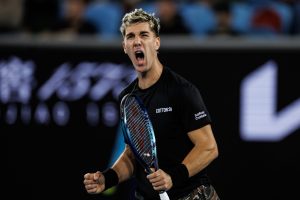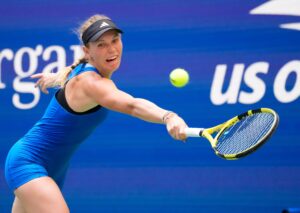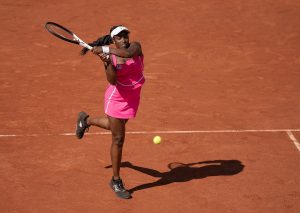This late, great stage of Roger Federer’s career, which dates back to his remarkable rebirth as a Major-winner at the Australian Open in 2017, now faces its ultimate test. The same test that he has faced throughout his entire career and so often failed to pass: how to beat Rafael Nadal on clay. With just over 24 hours to go before a meeting of two of the greatest players of all time, Federer somehow has to find a way to achieve what in sporting terms is almost impossible.
It has been entirely fitting that a career as storied and stellar as Federer’s did not pass quietly into the night. Instead, after nearly half a decade in which he could not win a Major, Federer roared back into the winner’s circle. Since that unlikely triumph at the Australian Open, he has added two more Grand Slams to his trophy cabinet, winning at Wimbledon later that year before defending his title in Melbourne in 2018.
He even briefly held the world #1 ranking again early last year after winning the title at the Rotterdam Open, making him the oldest to occupy that lofty position since the ATP rankings began in 1973. Perhaps more improbably still, at times during this late-career renaissance he has played arguably the finest tennis in his career. However, during Federer’s epic comeback there has been one obvious omission: clay-court tennis.
In both 2017 and 2018, he decided against playing on the clay at all, in an effort to preserve his energy and fitness for further assaults on the titles that he thought he was most likely to win, namely Wimbledon. That paid off for him as he won his eighth title in in SW19 in 2017, which finally took him past both William Renshaw and Pete Sampras, with whom he had been locked in a three-way tie for the most titles at the All England Club since 2012.
Although Federer did not retain his Wimbledon title last summer, losing from two sets up in the quarterfinal against Kevin Anderson, there is no doubt that his careful strategy of avoiding clay-court tennis altogether for two seasons has paid off. He avoided both injury and exhaustion, which are the almost inevitable consequences of playing on clay. Even Rafael Nadal, the greatest clay-court player ever, has discovered that to his cost, having been unable to claim a Wimbledon title since 2010.
But this season Federer elected to return to the red dirt. Ostensibly, as he said when he announced he would be playing at the Madrid Open, it is because his fitness has improved to the point that feels he can take the risk of playing on clay without jeopardising his far better chances of winning a Major at Wimbledon, on the fast grass-courts that are his natural home as a tennis player. However, there may be more to it than just a simple assessment of his improved fitness.
It may also be that even Federer, who at times appears that he will play on into his forties so effortless is his movement, has finally realised that he cannot go on forever and so has decided to play some of the premier clay-court events, especially the French Open, again before he retires. Federer has long stated that it is his goal to play at the 2020 Olympics in Tokyo in the hope of claiming that elusive gold medal in singles, but his future beyond that point is uncertain to say the least.
So far, as with his original plan to avoid playing on clay, Federer’s return can only be judged a success. He may only have played in Madrid and Rome, ultimately withdrawing from the latter to avoid any chance of injury after two gruelling matches in one day, but it was obviously enough to enable him to make a determined assault on the French Open. And having dropped just one set en route to the semifinals, he appears to be in almost perfect physical and mental shape to face Nadal in the last four.
The problem, of course, is that several times in the past Federer has appeared to be in fine fettle to face Nadal in Paris only to be brought low by the great Spaniard. In fact, some of Federer’s most crushing defeats have come at the French Open at Nadal’s hands. In 2008, the scale of his defeat in the final, in which he won just four games, proved damaging to his chances of winning a record sixth successive Wimbledon title later that summer, as he himself has subsequently admitted.
Of course, there is a chance that a similar savaging by Nadal in Paris this year could again hurt Federer’s chances of winning Wimbledon in July. However, more than a decade on from that beat-down, Federer appears infinitely more at ease with his game on clay and, as a result, he should be far more able to compartmentalise any possible defeat to his great rival. So even a straight-sets defeat in the semifinal should not have too detrimental an impact on his chances for the short grass-court season ahead.
Federer has a chance against Nadal in the semifinal, but it must be put into context. Nadal’s record at the French Open, where he is going for a record 12th title and where he has lost just twice since making his debut in 2005, is so extraordinary that it is no longer really comparable to that of any other great tennis player. Instead, it invites comparison with the records of the greatest sports teams on their own home grounds.
That of Liverpool in the 1970s and 1980s; that of the West Indies test cricket team, which did not lose a home series in the Caribbean for nearly two decades between the mid-1970s and mid-1990s; and even that of the New Zealand All Blacks rugby union team, who have not lost a home series for more than a quarter of a century and have only ever lost a handful in their entire history.
That is the scale of the challenge facing Federer in the French Open semifinal, because in effect Nadal will be playing at home. It is not impossible for Federer to beat him, but if he does it will probably go down as the single greatest achievement of even his remarkable career.
Main photo:
Embed from Getty Images






